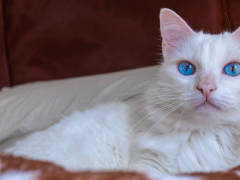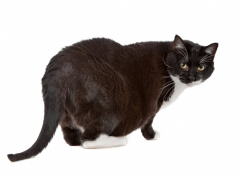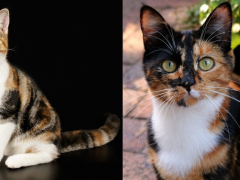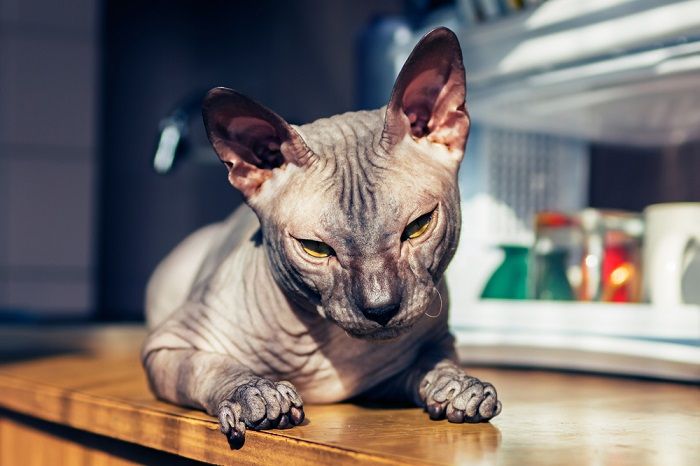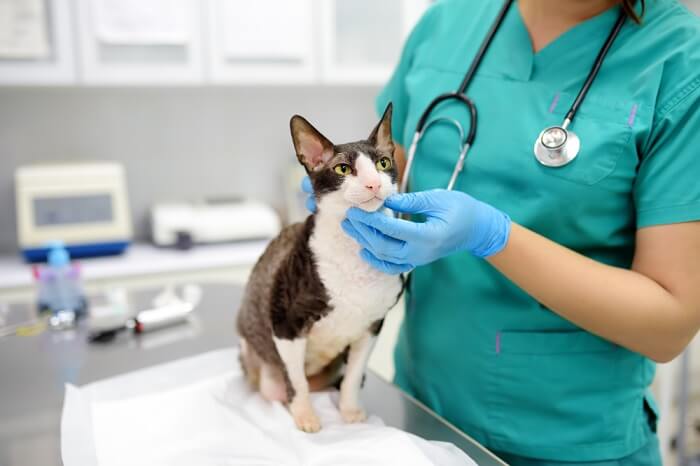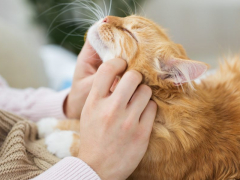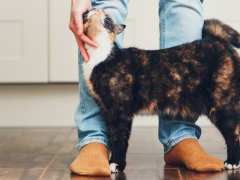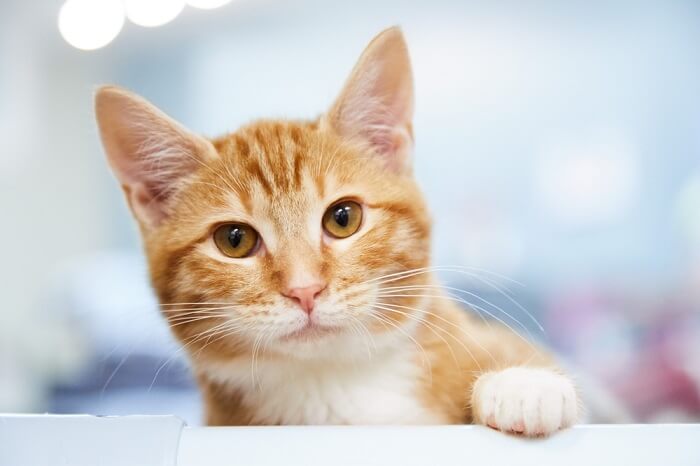
While every cat is technically a tabby, we usually only consider a cat to be a true tabby if they have one of the four classic patterns: swirls, spots, stripes, or ticked hairs.
As the most common kind of cat, tabby cats are surprisingly misunderstood. Most people don’t realize, for example, that every domestic house cat possesses the tabby gene. Those that aren’t easily identified by their stripes, swirls, or spots are called “diluted tabbies.”
These undercover tabby cats possess other genes that essentially cancel out classic tabby markings. However, even some diluted tabbies can’t hide the most distinctive mark of a tabby cat: the letter “M ” on their foreheads.
You might have a true mackerel tabby with a bold coat pattern, or your cat’s tabby gene might be muted by a solid or calico coat, but either way, your feline friend is related to a few interesting stories to explain this unmistakable marking. Of course, the science of DNA and genetics has the real answer, but humans throughout history have explained the phenomenon of the letter “M” in more creative ways. Here’s what we know about why tabby cats have an “M” on their foreheads.
The Science
While every cat is technically a tabby, we usually only consider a cat to be a true tabby if they have one of the four classic patterns: swirls, spots, stripes, or ticked hairs. And like every other physical characteristic, these markings are controlled by genes.
Without getting too deep into your high school biology book, every kitten inherits genes from its mother and father. Because the tabby gene is dominant, only one parent needs to be a tabby for the kitten to have tabby markings.
But why does every tabby have an “M” on their forehead? The reasoning behind this specific marking isn’t clear, but it likely has to do with the classic tabby fur patterns. Tabby cats usually have fine markings on their faces and legs, and then bolder, more dramatic, markings on their torsos. It doesn’t matter whether a tabby has tiger stripes or swirls that resemble a marble cake, the limited area of “canvas” on the cat’s face results in thin lines that resemble the letter “M.”
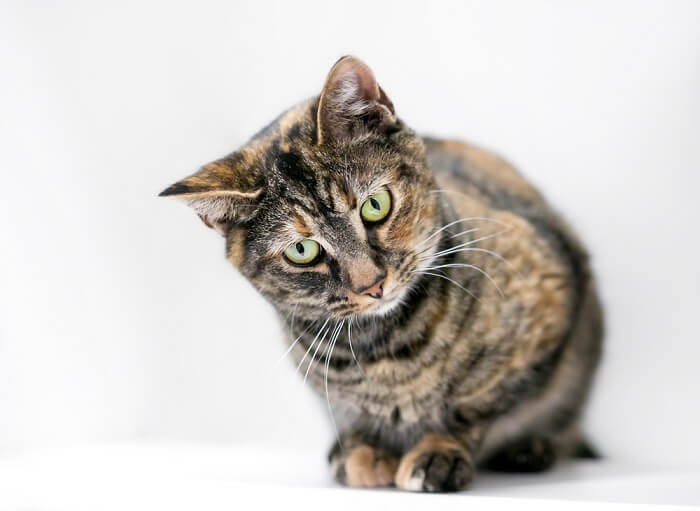
One of the well-known stories related to the “M” on a tabby’s forehead goes back to the Christian story of Mary and the birth of Jesus.
The Legends
Outside of the world of Punnett squares and DNA sequences, humans have attempted to explain the “M” through a series of tales and legends. Here are three of the most popular.
M for Mary
One of the well-known stories related to the “M” on a tabby’s forehead goes back to the Christian story of Mary and the birth of Jesus. Born in a manger, baby Jesus was stricken with cold, and there were no blankets to keep him warm.
His mother did everything she could, including cradling him in her arms and convincing the barn animals to move closer with their body heat. Despite her efforts, her newborn continued to cry and shiver with cold.
As the story goes, when Mary was at her most desperate, a friendly tabby cat came into the barn and curled up next to the baby. The cat’s body warmed baby Jesus and its purring lulled him to sleep. To express her gratitude, Mary then stroked the cat’s forehead and left behind her own initial to forever mark tabby cats for their kindness and comfort.
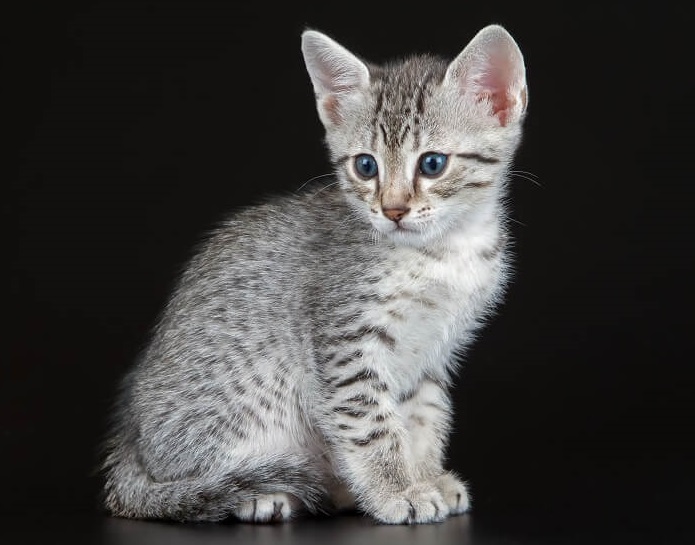
The Egyptian Mau is one of the oldest cat breeds still in existence, and they’ve carried that honorable mark of the moon for centuries.
Mau and Meow
It’s well-known that ancient Egyptians had a special relationship with domestic cats. Their word for cat was “mau,” which can also be translated to mean “sun” or “light.” Whether the name relates to the sound a cat makes (meow) or the way their eyes glow at night, the ancient Egyptians connected cats to the moon and believed they deserved respect.
The legend is that ancient Egyptian cats were marked with the “M” on their foreheads to symbolize their high status as well as their relationship with the glowing moon. The Egyptian Mau is one of the oldest cat breeds still in existence, and they’ve carried that honorable mark of the moon for centuries.
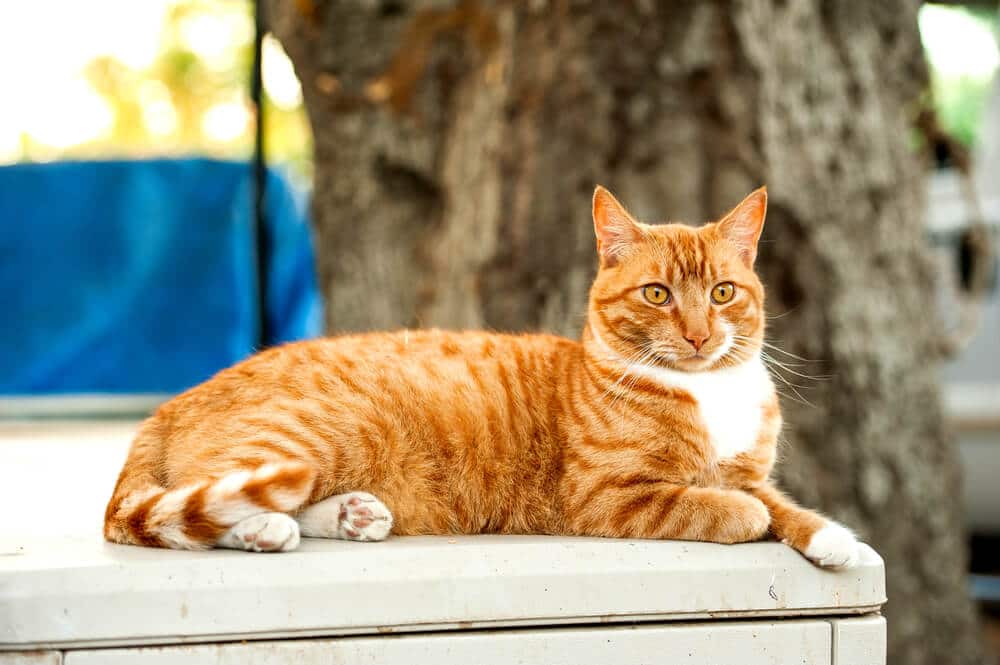
The next time you stare lovingly into your cat’s eyes, shift your gaze upward to their forehead.
Mohammed and Muezza
The final story as to why tabby cats have an “M” on their forehead comes from the religion of Islam. In this legend, Mohammad (the founder of Islam) had a tabby cat named Muezza. Mohammad loved and respected Muezza as a friend and made sacrifices to ensure the cat’s comfort and safety.
One day, Muezza returned the favor by saving Mohammad from a snake that slithered up the sleeve of his robe. Muezza killed the snake, and the prophet offered a few tokens of gratitude. First, he gifted cats the skill to always land on their feet. Next, Mohammad stroked his cat’s forehead and left behind his personal mark. That mark was meant to show the world that Muezza and all other tabby cats were beloved by him and all of Islam.
The next time you stare lovingly into your cat’s eyes, shift your gaze upward to their forehead. Can you see an “M?” If your cat is an undercover tabby, you might have to look closely and try different angles with different lighting. But if your cat is a true tabby, the “M” will be hard to miss.
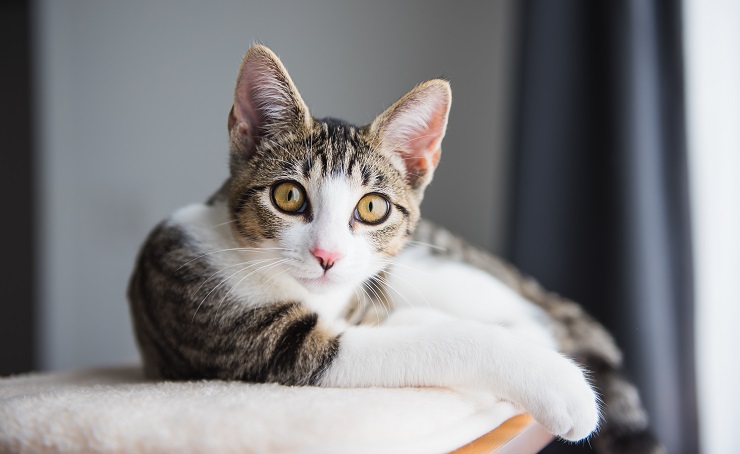
-
https://www.catster.com/lifestyle/tabby-tuesday-hot-the-tabby-got-the-m
-
https://www.purina.com/cats/cat-breeds/egyptian-mau
-
https://theislamicinformation.com/blogs/prophet-muhammad-pbuh-muezza-favorite-cat/
